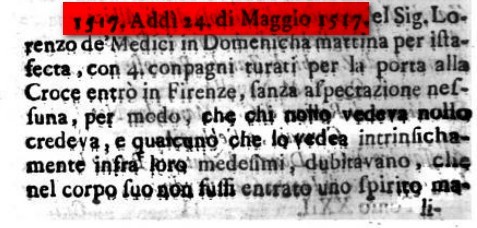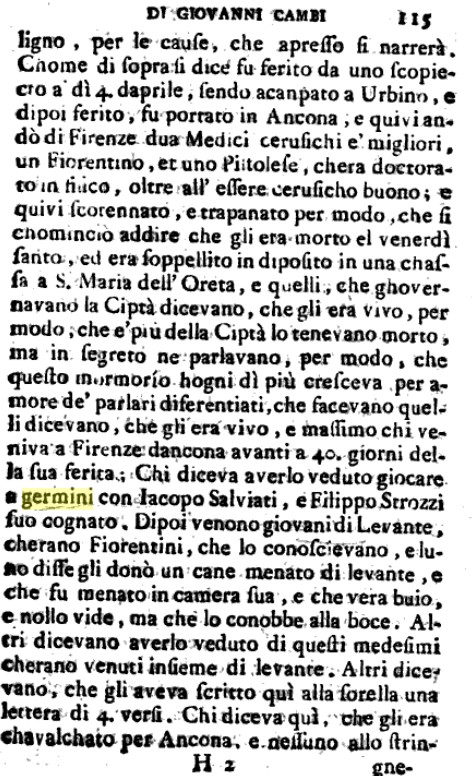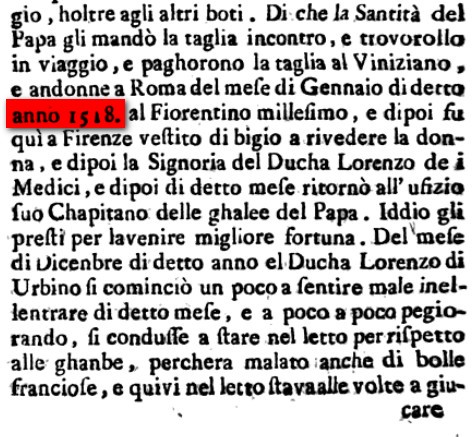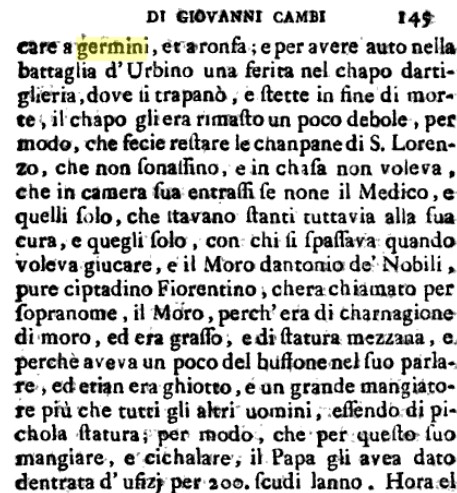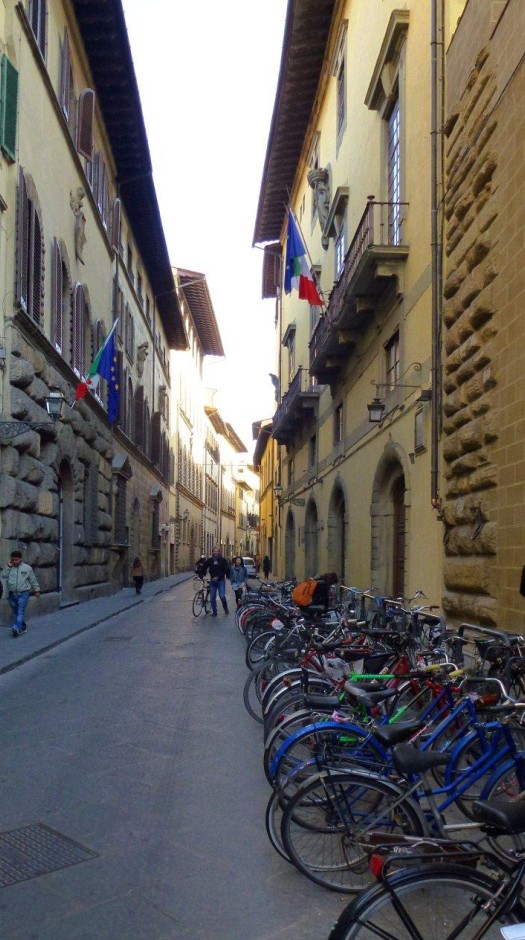Introduction
The discussion on the early history of playing cards and card games is continuing since a long time. In the last months, however, some improvement has occurred, especially with reference to Florence. I will not maintain that Florence was the centre of the early history of cards in Europe, let me just state that it is the centre of my research activity; therefore, it will be a constant reference in what can be read below. I leave to the judgement of the experts to decide whether this indeed corresponded to a central role, or to a peripheral one in Italy, and in Europe.
My main interest here will be on the local game (or games) of Minchiate and Germini, but I intend to insert the relevant problems in the context of some other cards and games.
Naibi and Carte
We must begin with Naibi. In the known Viterbo Cronichle one reads that this new game had been introduced in the town in 1379. There are slight variations in this text, according to the different copies kept, but this is the kind of information that we are always looking for – whenever it is fully reliable, I mean.
The renowned Florence Provvisione of 1377 is on the contrary of a different kind.(1) It is true that we read there that the game "noviter innolevit", which appears as a clear indication of its recent arrival. On the other hand, however, it is rather hard to admit that the practice of this game burst out instantly to the point to obsess the town council. An upsurge of that kind could be better compatible with TV or internet, than with the media of the time.
There is thus some space for research, even though the possible "progress" - obviously backwards in time - appears promising only if one is satisfied with a new step of just a few years.
Of some interest is also the question of the name change from Naibi to Carte. This occurred differently in various places, relatively late in Florence. I have the impression that in some cases the two names could correspond to different packs: for instance, if the pack had Queens, I would see it better denoted as Carte than Naibi, but this is just an impression of mine, with no firm basis.
Of course, I prefer to find Naibi rather than Carte in the documents, because the latter name may be used for different objects too, such as sheets of paper.
Trionfi
The case of Trionfi is different. Most experts agree that this name was introduced together with the augmented pack, provided with an additional special suit: all the following cases would thus just represent some of its variations. Nobody knows this for certain, and even less ascertained is whether this "first" new pack could be the same as we know it from later times, and especially the "standard" 78-card tarot.
The situation of the appearance of the name in various towns in the course of time was clearly illustrated by Ross Caldwell.(2) However, we have recently got a new list of dates: 1440 first record in the original Giornali by Ser Giusto Giusti; 1621 oldest extant copy by Carlo Strozzi; 2002 transcription by Nerida Newbigin; 2012 retrieval of the previous info by Thierry Depaulis.(3)
I am now searching how all this can be confirmed, and if earlier documents can be found. My research is not yet finished, but have already lost most of my hope to find useful documents as a direct support of Giusti’s entry. Particularly interesting will be to confirm the idiom "naibi a trionfi", which definitely inserts Trionfi into the playing card mainstream.
For the moment, the only previous pack known (little known "carte da Imperatori" apart) is the special pack of Trionfi introduced by Marziano in Milan, and any connection with Florence is doubtful.(4) All the following Florentine packs or games can instead be easily considered as variations of the original Trionfi.
Minchiate
The first quotation of this game in a letter of Luigi Pulci to Lorenzo il Magnifico is dated 1466 and I now believe that it is true, even if I could not discover the original letter. This is mainly because of further documents, of only a few years later, that I found in the meantime.
The problem here is whether this could be the same game (both pack and rules) as we know for the following centuries. For the moment, we can speak, to satisfy everybody, of Minchiate-I and Minchiate-II. Rather puzzling is also the fact that in the time between these two supposedly different kinds of Minchiate we find both Tarocchi and Germini.
Tarocchi
This is maybe the most important name for the pack-and-game under discussion. Not so however for Florence. Here around, the first quotation that I have in mind is from 1521, a performance in Sansepolcro and the corresponding booklet published in Perugia.(5) In that context, the particular pack used seems to be a Minchiate one.
I have studied the possible meanings of the tarot name,(6) as many others have done, without reaching any better result. In Florence, however, this was the least used of the various Trionfi names.
Germini
One significant progress about Germini has recently occurred when I found this game allowed in the Statuto of Montecatini Val di Cecina in 1529.(7)(7) This document was important for the date, the earliest known by then, but even more, probably, for the way in which the game was mentioned: "Trionfi grandi overo Germini ".
When I read this, I was convinced that "Trionfi piccoli" corresponded to a different pack, not only for its dimension, but also for the number of its cards. Now, I prefer to imagine that the difference was just that of card dimensions and that in the Florence territory Trionfi were used in the form of Germini, or had been changed into it.
Now, Lothar Teikemeier has found two new mentions of this game, which further antedate its attestation.(8) Let me discuss this new information.
Istorie by Giovanni Cambi
Giovanni Cambi (Firenze, 1458-1535) wrote a book of chronicles. A long initial part he compiled on the basis of previous historical manuscripts available to him. The critics state that his reports are especially reliable starting with 1480, when he writes of events of his time, about which he had direct information or had lived in person.
Of the same time, we have more authoritative books of chronicles, such as those by Machiavelli or Guicciardini. The Istorie by Giovanni Cambi were nevertheless read, copied, and used by following historians. This work only went to the press in 1785 and 1786 in the four volumes edited by Fr. Ildefonso di San Luigi in the series "Delizie degli eruditi toscani". The two quotations found by Lothar Teikemeier are on pages 115 and 145 of the third volume, dated 1786.
I was certain that earlier handwritten copies had been kept in Florence. I imagined that I could find several of them, and that my problem was to decide which could be the earliest and which could be its date, if not directly recorded in the book.
I have thus begun to find a few copies in Biblioteca Magliabechiana, within the Biblioteca Nazionale Centrale di Firence (BNCF). One of them (9) is stated to belong to the XVIII, but with the advantage to have been verified on the original book, kept in the library of Ospedale di Santa Maria Nuova.
This information has induced me to change program and, having known that the autograph book existed, to directly search for it. Fortunately enough, I did not need to search it in the Hospital: since 1779, this precious book has been moved directly into the archives that entered the BNCF itself, where it can still be examined. (10)
This occurrence has greatly simplified my task. No longer I had to care for the different copies and their dates. I had just to find in the text, directly written by Giovanni Cambi, whether the printed copy of 1786 corresponded to his original writing. It does, and the two sections with Germini references can be read on leaves 198r and 205v, respectively. We can rely on the dates of the writing to be very near to the dates of the events mentioned.
Lorenzo dei Medici between Germini and death
In reading anything about Lorenzo dei Medici, one feels to dwell in a familiar field of the history of the Renaissance. The problem is that this Lorenzo di Piero is another Lorenzo son of another Piero and only the grandchild of the Magnifico: to be prolix, we could name him as Lorenzo di Piero di Lorenzo (il Magnifico) di Piero dei Medici. By the way, this Medici was also nephew of Pope Leo X and father of the upcoming French Queen Catherine.
We have thus to search for Lorenzo duca di Urbino (Firenze 1492-1519), the last of the Medici da Cafaggiolo family (the following members had different sources).
Anybody interested can find several details on his life, but we are mainly concerned with his state of health during the last years of his life: note that we are not dealing with some illness of an old man, but of serious sickness of a young person.
Part of his illness was due to syphilis, but even worse were the outcomes of a bullet wound that he got in a battle near Urbino on 4 April 1517. The wound was serious and deep in his nape (Cambi uses "collottola" for this body part, but seemingly the point involved the skull). Two famous surgeons (if this term can be used already) assisted him in Ancona, but the operation required both scalping, at least in part, and trepanation. It seems to me that Lorenzo was thus seriously wounded twice, first by the bullet, then by the physicians.
What happened later on is easy to imagine, as soon as one reflects on the media of the time. The situation was so serious that soon rumours spread that he had died and his body deposited at Loreto. This version had several and different witnesses, but on the other hand contrasting rumours spread that he was still alive. Among the various more or less vague versions of the latter kind, most interesting for us is one that reports him while playing Germini together with Iacopo Salviati and his brother-in-law Filippo Strozzi. It is somewhat macabre to hear of our personage playing Germini, at the same time in which others reported him to have been buried.
This is however the first document on Germini connected with Lorenzo duke of Urbino. There is a second one, which is no longer a rumour, but in some sense still has death not far away.
The date is now 1518, but must be read as 1519 because is earlier than the Florence New Year of 25 March. Now Lorenzo is near to death and suffering, increasingly after the last December; he spends most of his time resting in his bed and no longer receives personages and officials of the town.
Only admitted to his presence are a few old friends who can support and entertain him. Among them the most welcome was Moro di Antonio dei Nobili, a light-hearted fat man belonging to a family that had their mansion near the Medici Palace of Via Larga. Also admitted was of course his brother-in-law Filippo Strozzi. Interesting for us is the report that sometimes – even in this terrible situation – he played Germini.
A personal comment
The first time we found Germini played by a man, who probably was already dead: the second time we find the same game played by the same man, who actually was not yet dead, but was anyhow near to passing away. I hope soon to find further documents, somewhat earlier and better off.
It may be worth reflecting that we have the first information about Minchiate from Lorenzo il Magnifico and the first about Germini from a second Lorenzo dei Medici, his grandchild. In both cases, there is absolutely no indication that these eminent personages had introduced a new game, or improved an existing one with original ideas.
Of course we find the game connected with famous figures because they were fond of it, as for instance Pope Leo X (son of the first Lorenzo and uncle of the second) is mentioned more than once as exceedingly fond of chess.
My impression continues to be that the fact that these are our earliest documents on the games is only due to the relevance of these personages: laymen who had played the same games nobody knows how long before had much less probability to be noted in the chronicles of the time.
Conclusion
Thanks also to the Web and its search facilities, Thierry Depaulis and Lothar Teikemeier have recently found important new information for the history of playing cards in Florence - for Trionfi and Germini, respectively. Both new data are useful for a step backwards in time for the first dates in which these games are recorded in the documents: now 1440 for Trionfi, and 1517 for Germini.
In the first occurrence, Ser Giusto Giusti has a Trionfi pack being produced with the coats of arms of its addressee: Sigismondo Malatesta, for a few years Signore of Rimini. In the second occurrence, players are Lorenzo dei Medici duke of Urbino and a few known Florentine personages.
In both cases, no indication is provided that the game was a new invention or had a recent introduction. Further research may thus allow us to make some further steps towards the initial stages of these games. This can be done in the archives of Florence, but also anywhere else, as proved by the mentioned recent contributions, coming from Paris and Cologne.
Footnotes:
(1) Franco Pratesi: On the Introduction of Playing Cards in Florence (1989)
(2) Ross Caldwell, The Playing-Card, Vol. 36 No. 1 (2007) 51-62.
(3) Thierry Depaulis, Personal Communication, 01.02.2012; Forum discussion: Florence 1440 - New Earliest Reference to Tarot
(4) Franco Pratesi: The eariest Tarot Pack known (1989)
(5) Franco Pratesi: Notturno’s Gioco di Triomphi (1988)
(6) Le Lingue del Mondo, 55 N. 5 (1990) 284-288.
(7) The Playing-Card, Vol. 40 No. 3 (2012) 167.
(8) Lothar Teikemeier, Personal Communication, 23.03.2012; Forum discussion: Germini (1517/18) and Ganellini (1613)
(9) BNCF, II.V.1; già Magl. Cl XXV, 684; proveniente ASF.
(10) BNCF, Fondo Nazionale, II.III.69.
|

Entrance of Palazzo Neroni, now seat of Soprintendenza Archivistiva
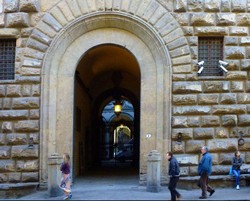
Palazzo Medici, opposite Palazzo Neroni
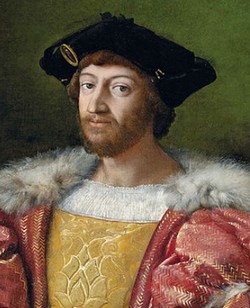
Lorenzo di Medici, duke of Urbino
Ruler in Florence since 1513, aged 21
Duke of Urbino since 1516
wounded in war of Urbino 1517
married at 1518, May 5
died 1519 May 4
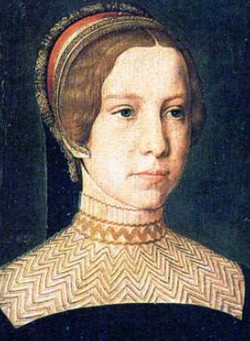
Madeleine de La Tour d'Auvergne
Lorenzo's wife
died 1519 April 28

Catherine de Medici
single daughter
orphan short after birth
French Queen and King's mother from 1547-1589
|
|
